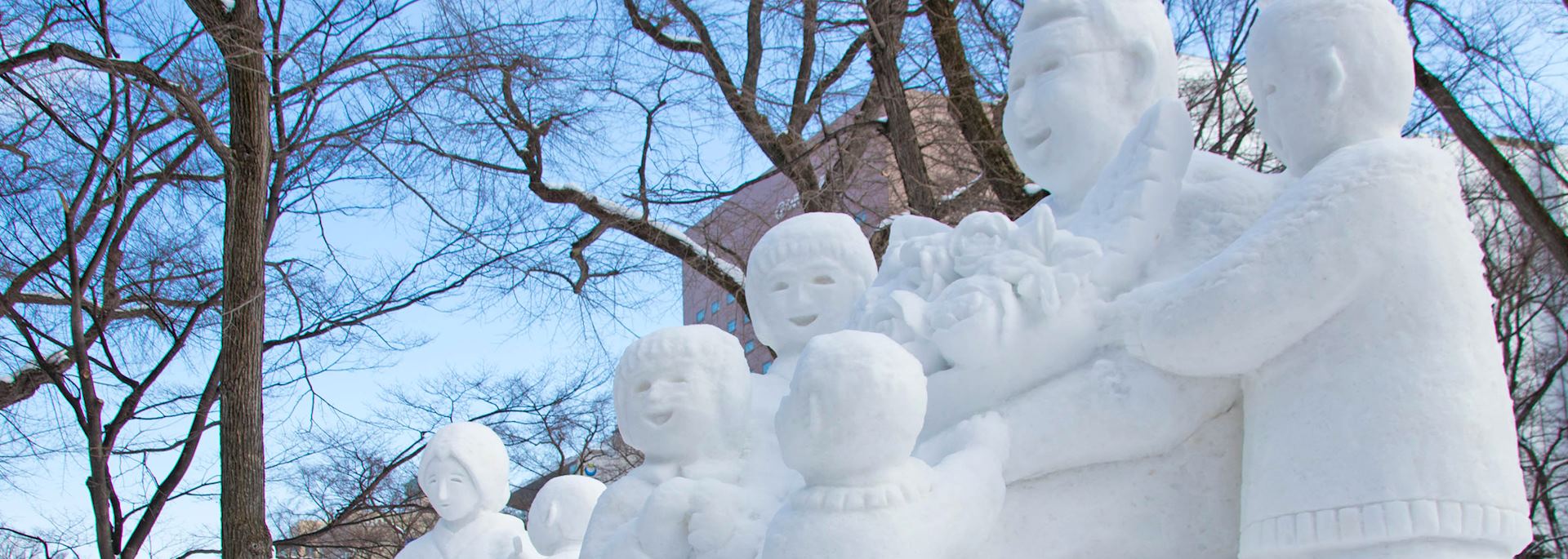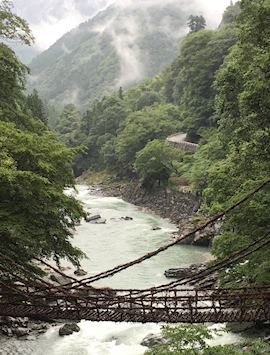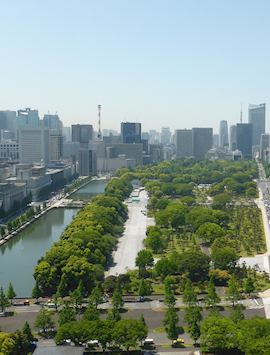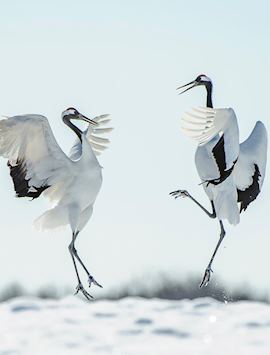By Audley Japan specialist Rachael
Having lived in Japan for a year, I’ve had the opportunity to experience the full cycle of Japanese festivals and celebrations, from country-wide to more niche, local events. Fireworks, illuminations and the coming together of families are recurrent themes.
Beginning with New Year temple blessings, events run right through the year, making it simple to find one to fit into your travel plans. As an enthusiastic outsider at these occasions, I’ve found that people will come over and say hello, curious to discover where I’m from and keen to explain what the celebration entails.
Where to find Japan’s best festivals and celebrations

The Japanese love celebrations and their calendar is full of them. Many, such as the cherry blossom and coming of age festivities, are celebrated across the country over a number of days, making them easy to slip into your travel itinerary without the need for much pre-planning.
Choose to celebrate in a large city such as Tokyo or Kyoto for the most explosive fireworks and bustling roads lined with freshly cooked street food. Stay in a peaceful town on the Nakasendo Highway or away from the main island, and you can enjoy a quieter atmosphere and, most likely, be welcomed as one of the few visitors to a festival.
Japan’s best festivals and celebrations, by month
O-Shogatsu: New Year’s Eve in Japan (January)

On my first New Year’s Eve in Japan, I headed out in the early evening and found the streets and temples almost deserted. As I found out, celebrations don’t usually kick off until about 11pm. I’d suggest starting the evening with a relaxed meal at your hotel — Japanese families will be gathered together at home to share a meal.
As midnight approaches, families head out to their nearest temple or shrine, stopping for some locally brewed sake at makeshift street stalls along the way. People line up to pray alongside the temple monks and have their fortunes read by the monks. You might see people carrying branches of bamboo or conifer to be burned on bonfires built in the courtyard of each temple.
At midnight, the temple bells are rung, each clang said to remove a ‘bonnou’ (trouble). If you’re in Kyoto you might well hear the Chion-in temple bell, so large that it takes ten monks to swing a beam of wood to ring it.
Seijinshiki: Coming of Age Day (January)

On the second Monday of January, Seijinshiki is celebrated across Japan. To mark the transition from teenager to adult, young people who have turned 20 over the past year dress up in exquisite traditional clothing. Women wear silk kimonos and fur wraps, and men a short, open-hanging kimono known as a haori. The outfits tend to be so expensive that many people rent them.
Each town and city will usually hold an event in the city hall or square, where you can sit and watch the young Japanese congregate with their families to be photographed. In Kyoto, I spectated on the city mayor’s speech welcoming them into adulthood — with a gentle reminder of their responsibilities and duties.
Sapporo Snow Festival (February)

At the beginning of February, the city of Sapporo on Japan’s northern island of Hokkaido is transformed. Teams of artists and sculptors from around the world descend on the city’s main street, building ice sculptures the size of two-story houses.
There’s a different theme every year, with past sculptures including a detailed recreation of Angkor Wat and an Egyptian panorama. The year I attended, a 15 m (50 ft) Darth Vader loomed over visitors during the Star-Wars-themed event.
There are smaller sculpture sites just off the main street, including one for an international snow sculpture competition. Amateurs are also given the chance to take part; the teaching program I was part of had the opportunity to make a sculpture, with a little expert guidance.
Venture out into the chilly evening and you’ll see the sculptures illuminated. By this time of day, the temperature can have dropped to -14°C (6°F), but you can buy heat packs for your hands from convenience stores. It’s also a chance to try a comforting bowl of butadong, a steaming hot dish of rice and marinated pork.
I find that people often dismiss visiting Japan in winter, but the snowy landscapes and quieter cities can create quite a special experience. Sapporo is a short flight from Tokyo, and acts as a transport hub for visiting the surrounding areas.
In February, you could pair the snow festival with two of Hokkaido’s other seasonal offerings. Travel to the wetlands of the Kushiro-shitsugen National Park to witness the red-crowned crane’s remarkable mating rituals, or go skiing in Furano.
The snow festival runs for a week, but I’d avoid the busy weekend if you can.
Hanami: Cherry blossom viewing season (March/April)

Fragile clouds of pink cherry blossom are synonymous with spring in Japan. When the buds bloom, the Japanese celebrate with aplomb. Groups of families and friends head to the nearest park to picnic under the trees’ boughs, with street-food stalls popping up to sell cherry-blossom-scented varieties of dumplings, beer and even popular makes of chocolate bars.
The trees flower in a wave across the country, starting off in February in the south and finishing around May time in the north. If your trip spans this period, there’s a good chance you’ll be able to take part in Hanami. Grab a bento (a pre-packed lunchbox containing spring-themed snacks) from a nearby convenience store and picnic under the boughs. The flowers are illuminated in the evenings and, as a foreign visitor, you’re often encouraged to join in the celebrations by the locals.
The Wisteria Festival (April/May)

The Wisteria Festival doesn’t attract as many international visitors as the cherry blossom, but the Japanese revel in the tendrils of lilac blooms that grace parks, temples and gardens from the end of April to mid-May.
At the Kameido Tenjin Shrine, in east Tokyo, you can walk under hanging trellises of wisteria. Boughs have been grown over bright-red moon bridges (highly arched bridges), to create the reflected flecks of purple and red on the water below. Visit in the evening to see the blossom illuminated, and to taste street-food yakitori (grilled chicken) and okonomiyaki (savory pancakes).
Obon: blessing the souls of your ancestors (August)

Buddhists believe that every year, during the month of August, their ancestors visit from the spirit world. Families gather to remember those departed, spending time visiting temples and taking walks.
Each part of Japan has its own Obon celebrations — all involving a copious amount of fireworks — so I find it best to check what’s on in the locality of your trip before departing. Visiting Japan during the Obon festival also ties in nicely with climbing Mount Fuji, which is only possible during July and August.
Daimonji festival: guiding ancestors back to the spirit world (August)

While in Kyoto, I was able to see a full program of Obon celebrations, including temple blessings, dance performances and families gathering to clean and decorate family graves.
Each town performs a ceremony to say goodbye to ancestral spirits and Kyoto’s is particularly impressive. Five huge fires are lit on the hills surrounding the city, to guide the ancestors back to the spirit world. Each fire is laid out in the shape of a Japanese character or symbol, including a giant torii gate and the character Myō/Hō (referring to Buddhist teachings).
The festival is officially called Gozan no Okuribi. To local people it’s the Daimonji Festival after the largest and most visible fire, which is in the shape of the character daimonji meaning ‘large’ or ‘great’.
The fires can be seen from almost anywhere in the city. For the best views, I’d suggest heading to a roof-top restaurant. If you’d like to join in, head to the east side of the Kamo River, which looks across at the first fire to be lit. Thousands of locals sit on the banks of the river, drinking locally brewed beer or tea — many older members of the community will be dressed in a yukata (a light summer kimono).
Shichi-Go-San: 7-5-3 Day or Young Children’s Day (November)
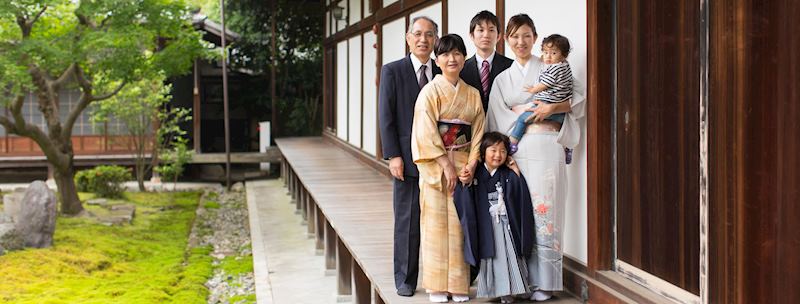
Shichi-Go-San translates directly as seven-five-three: lucky numbers for the Japanese. The ages of seven, five and three are seen as pivotal points in a child’s development, marks of their journey into adulthood.
The day is officially marked on 15th November (15 being the sum of seven, five and three) but tends to be observed on the nearest weekend to avoid children missing school.
Shichi-Go-San is celebrated across Japan, and the festivities are best viewed by visiting a local Shinto shrine. Children who have reached one of the important ages will visit a shrine with their family to drive out evil spirits and wish for a long and healthy life. The children are elaborately dressed in traditional clothing, the girls in kimonos and the boys in hakama. The girls’ hair is carefully teased into complex styles and dressed with flowers and ribbons. Pop-up photo booths appear so families can send mementoes to family and friends.
Practical advice for enjoying festivals and celebrations in Japan
- For nationwide celebrations or large events such as cherry blossom season and the Sapporo Snow Festival, accommodation tends to sell out swiftly, so it’s prudent to book at least a year in advance.
- Food plays an important part in Japanese celebrations, with many delicacies made specifically for each event. Nip into a local convenience store to see what’s available — specific types of mochi (rice cakes) are made for each festival.
- If your trip doesn’t fall on any times or dates mentioned here, it’s worth asking your specialist if there are any alternatives that tie in with when you’re planning to visit. The Japanese love celebrations and there are hundreds of events throughout the year.
- Japan’s public transport system is so efficient that you won’t notice much disruption during any festival or celebration, but domestic flights can be a little more expensive as many Japanese fly back to their ancestral home to celebrate.
Start planning your trip to Japan
Start thinking about your experience. These itineraries are simply suggestions for how you could enjoy some of the same experiences as our specialists. They're just for inspiration, because your trip will be created around your particular tastes.
View All Tours in Japan
